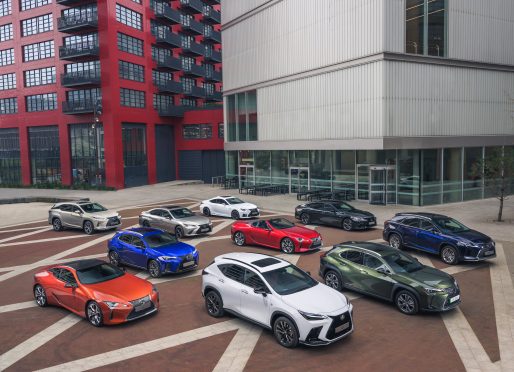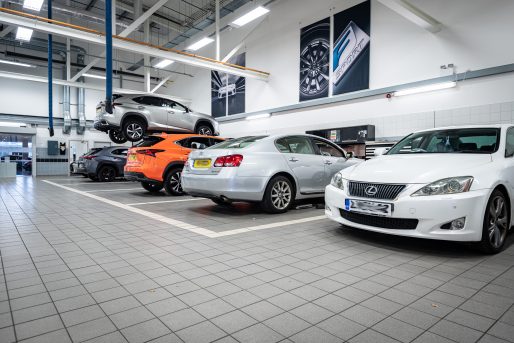There’s never been a Lexus quite like it: sheet metal, glass and plastics have been set aside for the creation of a one-off, life-sized recreation of the Lexus IS…. Crafted in precision-cut card.
Pushing the boundaries of design, technology and craftsmanship, this driveable, full-sized sculpture explores Lexus’s promise of Creating Amazing.
Comprised of some 1700 individually shaped pieces of cardboard, this origami-inspired car is a faithful replica of the Lexus IS saloon, and is produced as a celebration of the human craftsmanship skills that go into every car Lexus makes.
Members of the public will be able to see the Origami Car as a star attraction at the BBC Good Food Show, at Olympia, London from November 13-15th .
With a fully fitted interior, functioning doors, headlights and rolling wheels, the “origami” Lexus explores the design of the Lexus IS in forensic detail, and that’s not all. Thanks to an electric motor mounted on its steel and aluminium frame, it can even be driven.
Find out more about how the car was made in our video…
Like the contour lines of a map, the car’s every detail has been computer scanned and divided into segments, which are then translated into reality via laser-cut sheet cardboard.
Each sheet has been painstakingly fixed together, while a robust subframe supports an electric motor to provide locomotion.
The car has been created to celebrate the things that make Lexus unique. A true modern piece of performance art.
The project’s scale and complexity meant its creation was an unprecedented undertaking for LaserCut WORKS, and Scales and Models, two London-based specialist companies with extensive experience in the design and creation of prototypes, architectural models and bespoke commissions.
Scales and Models company founder and director Ruben Marcos explained: “This was a very demanding job, with five people involved in the digital design, modelling, laser cutting and assembly. Just like Lexus, we were committed to producing the best possible quality.”
The creative process presented the team with a series of tough challenges: “The seats took a few attempts to get just right and the wheels required a lot of refining. Once we could see the physical pieces taking shape, we could identify where we needed to make improvements – as with anything, there were some elements of trial and error, but as we had all the resources we needed in-house, this made the changes easier to produce.”
Lexus provided the team with a digital 3D model of the IS, which was then divided into a series of principal parts, such as the main body, dashboard, seats and wheels. These were then digitally rendered in 10mm “slices” to provide the two-dimensional profiles needed for the laser cutting of each of the 1,700 sheets of 10mm-thick cardboard – supplied by packaging expert DS Smith.
Each layer was given its own reference number to help ensure it was assembled in the right sequence and the entire assembly was done by hand. A water-based wood glue was used, which had to be left to set for 10 minutes after each application. Accuracy was vital, as changes couldn’t be made once the glue had dried. In all, the Origami Car took three months to build.
Watch our film, introducing the Lexus Takumi Challenge…
Lexus factories are renowned for their technology and high quality output. But the company is also famous for hand craftsmanship, a discipline that goes to the heart of company culture.
Our master car-makers are known as the Takumi – an ancient Japanese word that roughly translates as “artisan” – and are highly respected. They are tasked with personally ensuring, by hand and eye, that the cars coming out of our factories are built and finished to unprecedented standards.
They bring another benefit: their skills have been digitised and programmed into many of the robotic functions, raising precision standards to new heights. This development also means that the Takumi’s talents are highly transferable in mechanical form to other plants.
These skilled men and women who work on the Lexus production lines hone their dexterity skills by learning how to fold paper into an origami model cat, using only their non-dominant hand. The Origami Car takes this talent to a new level, while also capturing the spirit of Creating Amazing.





The front design of the Lexus take away from the aesthetics of the Lexus brand. This design feature is more fitting for the Avalon going forward.
Please, edit the front panel of the Lexus to reflect a more luxurious look.
Hi there,
Thank you for your feedback. We value all our feedback we receive and we will pass this back to the relevant product teams. If you have any questions please let us know.